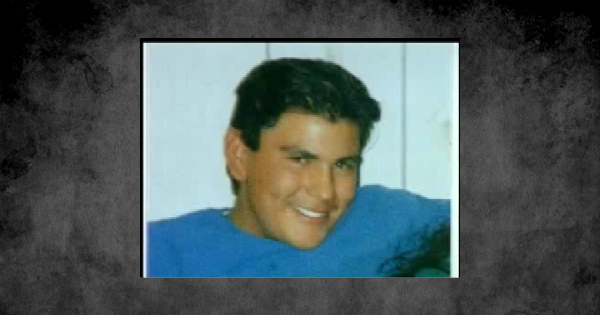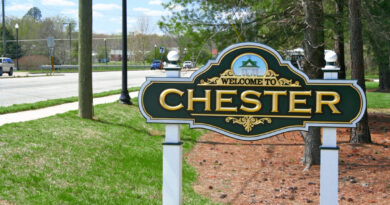Jonathan Francia Burned to Death in Vehicle Trunk in Winslow Arizona
Jonathan J. Francia was the eldest of three children in a close-knit family living in Albuquerque, New Mexico. His father worked as an auto mechanic, and his mother juggled part-time retail shifts with caring for the household. Despite financial constraints, the family emphasized education and community ties: church fundraisers, youth sports leagues, and neighborhood block parties were common weekend rituals. Jonathan attended Albuquerque High School, where he maintained solid grades and showed leadership as captain of the junior varsity basketball team. Known for his easy smile, he helped younger students learn the basics of automotive repair in his father’s garage. At home, he spent hours tinkering under hoods, absorbed in the rhythmic clink of wrenches and the smell of motor oil. Friends described him as protective—he routinely escorted his younger sister to evening dance classes and never hesitated to lend a hand. January 1994 began with the hope of college visits and summer plans, but those aspirations vanished along with Jonathan himself when a simple errand turned disastrous.
The Day of Disappearance
On January 12, 1994, Jonathan left school around 3:30 in the afternoon, picking up his friend Monica to grab an early dinner at JB’s Restaurant, a popular 24-hour diner on Central Avenue. The sky was overcast, with winter’s low sun casting long shadows across the asphalt. After pulling into the lot, Jonathan shut off the engine to save gas and parked near the neon sign advertising two-dollar shakes. Monica stepped out to order while Jonathan sat behind the wheel, scrolling through cassette tapes to choose a song for the ride home. Moments later, patrol cars would later show a dark figure approaching the driver’s side window just as Jonathan reached for a tape labeled “80s Hits.” Witnesses later told investigators they heard raised voices—shouts muffled by the roar of a passing freight train—but assumed it was a heated debate over music selection. In reality, a man wielding a small firearm forced Jonathan from the car, shoved him into the unlocked trunk, and sped away in full view of several stunned onlookers. The Camaro’s taillights blinked twice before disappearing into the dusk.
Discovery of the Burned Vehicle
Five days passed with frantic searches, missing-person flyers, and midnight stakeouts at deserted intersections. Then, just after dawn on January 17, interstate travelers reported plumes of black smoke rising against Arizona’s pale morning sky. Near Winslow, on a lonely stretch of desert road framed by scrub brush and distant mesas, they found the wreckage of Jonathan’s 1978 Chevrolet Camaro. The metal frame sat wedged into the gravel shoulder, its once-shiny exterior now baked to a dull gray. Windows had shattered inward, and the interior was gutted—dashboards collapsed, upholstery reduced to ash. The trunk lid lay twisted, revealing skeletal fragments burned into the trunk’s steel basin. The odor of charred plastic and human remains clung to the air. Local ranchers, called by highway patrol, stood solemnly at the perimeter, instinctively respectful of a scene that spoke of violence and loss.
Crime Scene Response
Law enforcement from the Navajo Nation Police and Coconino County officers established a broad perimeter under a bitter breeze that cut through the desert dawn. Yellow tape fluttered against chain-link fence posts, delineating a grid that forensic teams would map inch by inch. Investigators donned protective suits as they photographed the vehicle from multiple angles, capturing burn patterns on the roof and flames’ heat signatures marked by warped metal. A mobile command trailer parked on the roadside, radios crackling with updates from Albuquerque, where family members held a vigil in hope. Evidence technicians used metal probes to lift bone shards and fragments of burnt fabric, each piece placed in labeled evidence bags. Canisters of accelerant detection foam were sprayed sparingly to avoid cross-contamination, yet initial tests indicated traces of gasoline along the trunk’s base. As forensic leads mounted, the stark realization set in: this scene was not an accident but a grave of violent intent.
Forensic Investigation
Back at the state crime lab, fire investigators and forensic anthropologists coalesced around tables strewn with bone fragments, soot samples, and warped metal trim. Microscopic examination revealed soot deposits in lung tissue, proving the victim was still alive when engulfed in flames. Tiny flecks of textile fibers fused to bone suggested clothing fragments survived the blaze. Analysts soaked fragments in chemical solvents to extract potential DNA, while scanning electron microscopy mapped puncture marks on ribs indicating multiple stab wounds. A forensic odontologist prepared a dental chart from recovered tooth fragments, while an anthropological team reconstructed pelvic and femoral remains to estimate age and stature. Laboratory reports noted heat-induced fractures consistent with rapid ignition, confirming the fire’s purpose: complete destruction of evidence. Lengthy chain-of-custody logs were maintained to ensure all samples—soil from beneath the car, accelerant residues, and charred metal swatches—were accounted for in eventual court proceedings.
Identification of the Remains
Comparison of dental records, supplied by Albuquerque’s health clinic, matched distinct fillings and tooth angles to Jonathan’s childhood exams. A warped medical identification tag, fused onto a belt buckle found in the trunk, bore initials that paralleled the family’s records. Notification teams traveled to Winslow with soft-footed respect, delivering the painful news to Jonathan’s parents. The family traveled back to a mortuary where forensic pathologists completed the cause-of-death assessment: multiple lacerations and stabbing injuries preceded the accelerant-induced heat injuries. Private autopsy findings detailed soot infiltration in the tracheal passages and evidence of blunt-force trauma to the skull. Family and community members gathered at a candlelight vigil in Albuquerque, where tear-streaked faces reflected candle flames. Tribal elders from nearby reservations offered prayers, uniting cultures in mourning a youth lost to senseless cruelty.
Reconstruction of Events
Piecing together data from witness interviews, investigators mapped a timeline: Jonathan was abducted shortly after 6:00 p.m. on January 12. The assailants drove north on Route 66, pausing near small highways and rest stops before veering onto Interstate 40 through Petrified Forest National Park. Speed records from patrol logs showed no human checks until near Winslow early on January 17. Phone records placed family calls to cellular towers along the route, pinpointing travel windows. Ballistic tests on shell casings found at a nearby rest area matched a handgun type recovered in a separate, unrelated arrest months later—but linking ownership remained elusive. Composite sketches circulated for a suspect nicknamed “Jason,” described by a gas-station attendant who recalled a tall man buying coffee near Winslow the morning before the Camaro was found.
Challenges in Evidence Collection
Desert conditions wreaked havoc on fragile clues. Scorching daytime heat followed by sub-freezing nights caused repeated stress fractures in bone samples. Occasional dust storms threatened to bury peripheral evidence under layers of silt. Footprints discovered near the car proved unreliable, as wind-blown sand obliterated crisp edges. Early responders noted that curious tourists had breached the perimeter before fully understanding the scene’s gravity, stepping over markers and inadvertently destroying potential DNA sources. Over time, evidence room renovations at the state lab resulted in misplaced boxes and mixed-up folders, forcing investigators to conduct exhaustive audits. Despite these obstacles, modern cold-case teams breathed new life into the files by employing sophisticated chemical washes that isolated microscopic fibers overlooked in initial sweeps.
Impact on Family and Community
In Albuquerque, Jonathan’s disappearance and subsequent discovery fractured the community’s sense of safety. Students at his high school spoke of looking over their shoulders on late-night drives. Local mental health counselors noted a spike in anxiety among families coping with missing loved ones. Jonathan’s parents channeled their grief into activism: they formed the Francia Foundation, hosting annual search-and-rescue training workshops along desert and mountain routes. The foundation collaborated with law enforcement agencies to provide scholarships for forensics students and donated thermal imaging equipment to volunteer groups. In Winslow, the local Rotary Club erected a memorial bench near the highway turnoff, engraved with Jonathan’s name and a quote about the enduring power of memory. At intertribal gatherings, Navajo speakers shared stories of souls journeying through harsh landscapes, offering solace that Jonathan’s spirit received guidance across cultural boundaries.
Ongoing Investigative Efforts
Though one suspect died by suicide in custody after confessing under interrogation, another remains unidentified. In recent years, detectives have uploaded DNA profiles from tensile fragments into genealogy databases, hoping distant relatives’ matches might yield a breakthrough. Multiagency task forces convene annually to review archival footage and reinterview original witnesses, some of whom have since passed away. Monetary rewards, totaling over twenty thousand dollars, are still offered for credible tips leading to conviction. Podcasts and true-crime series have featured the case, generating renewed public interest and prompting cold-case sleuths to scour social media for overlooked clues. Investigators have considered geographic profiling techniques, using kill-site data and travel corridors, to narrow possible locations where the second suspect might reside now decades after the crime.
Legacy of the Case
The burned remains of Jonathan J. Francia served as a catalyst for institutional reforms across state lines. Memorial scholarships in his name support students pursuing criminal justice and forensic science. Annual vigils on January 17 honor missing and murdered youths nationwide, reminding communities of the enduring impact of unresolved tragedies. Albuquerque and Winslow law enforcement now share live databases for missing-person alerts and coordinate press briefings to maintain public awareness. Jonathan’s story underscores the importance of immediate response and meticulous evidence preservation. Though he is gone, his memory continues to inspire reforms, community solidarity, and the unwavering belief that even the coldest cases can one day yield to truth.
Discover more from City Towner
Subscribe to get the latest posts sent to your email.




